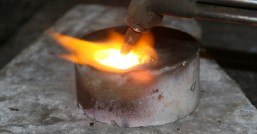In the realm of modern industrial processes, welding gloves play a pivotal role in ensuring the safety and efficiency of welders. These gloves are not just mere protective equipment; they embody a multifaceted function that ranges from providing protection from heat, sparks, and UV radiation to enhancing comfort and workability.
1. Thermal Protection
The foremost function of welding gloves is thermal protection. The extreme temperatures generated during welding can cause severe burns to unprotected skin. The gloves are made from heat-resistant materials such as leather, Kevlar, or synthetic rubbers, which act as barriers against the intense heat.

2. Spark and Flame Resistance
Another critical aspect of welding gloves is their ability to protect against flying sparks and flames. Sparks generated during welding can easily penetrate through thin fabrics, causing burns and other injuries. The reinforced materials used in welding gloves offer excellent resistance against sparks, thus reducing the risk of injury.
3. UV Protection
Welding generates ultraviolet (UV) radiation, which can cause long-term damage to the skin, including premature aging and skin cancer. Welding gloves with special UV-blocking materials protect the hands from this harmful radiation, minimizing its potential damage.
4. abrasion Resistance
The roughness and abrasiveness of welding tasks often lead to cuts and abrasions on the hands. Welding gloves with reinforced palms and fingers are designed to offer superior abrasion resistance, thus protecting the wearer from such injuries.

5. Enhanced Grip
The gloves' textured design and materials provide welders with a firmer grip, enabling them to hold tools and materials securely. This is crucial, as welding often requires precision and stability, which can be compromised by sweaty or slippery hands.
6. Comfort and Flexibility
Despite their robust protective features, welding gloves are designed to offer maximum comfort and flexibility. The materials used are lightweight and breathable, ensuring that the hands don't sweat excessively or feel cramped. This, in turn, enhances the overall productivity and comfort of the welder.
7. Durability
Welding gloves are made to withstand the rigors of constant use and exposure to extreme conditions. The materials and stitching are reinforced to ensure durability, making them a cost-effective investment for welders who need reliable protection.

8. Versatility
Different welding tasks require different levels of protection and comfort. Welding gloves come in a wide range of sizes, thicknesses, and materials, catering to specific welding needs. From light-duty tasks to heavy-duty welding, there's a glove that perfectly suits the job.
In conclusion, welding gloves play an integral role in safeguarding welders from the numerous hazards they face on the job. They offer protection from heat, sparks, UV radiation, abrasions, and enhance comfort, grip, and workability. With their versatile designs and materials, welding gloves are a crucial component of any welder's protective equipment, ensuring safety and efficiency in the workplace.








发表评论